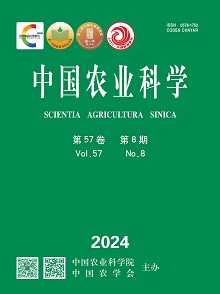|
|
Differences in Expression of HSPA2 in Different Tissues and Organs of Yak
WEN Ze-xing, YU Si-jiu, ZHAI Yu-jia, YANG Kun, LIU Peng-gang, HE Jun-feng, CUI Yan
Scientia Agricultura Sinica
2014, 47 (17):
3475-3482.
DOI: 10.3864/j.issn.0578-1752.2014.17.015
【Objective】 This experiment was conducted to study the differences in expression of heat shock protein 70-2 (HSPA2) in different tissues and organs of yak. 【Method】 Three 1-year-old Qinghai Plateau male yaks were used in the present study. Under normal physiological conditions, the tissues and organs were obtained from healthy yak in mid-september 2013 (heart, liver, spleen, lung, kidney, brain and testis). The RNA were extracted from different tissues and organs of yak, and the RNA were reverse-transcribed into first-strand cDNA. The primers were designed specifically according to the Bos grunniens HSPA2 and β-actin gene sequences (HSPA2:KC790105.1, β-actin: DQ838049.1). Firstly, RT-PCR were used to verify the real-time quantitative PCR (RT-qPCR) could be applied to the determination of the differences in expression of HSPA2 gene in different tissues and organs of yak. Then, real time quantitative PCR was applied to analyze the expression of HSPA2 gene. Paraformaldehyde was used to fix different tissues and organs of yak, and then made into paraffin sections. The protein localization of HSPA2 was measured by immunohistochemistry. The Image-Pro Plus 6.0 software was used to analyze immunohistochemistry, the integrated optical density of HSPA2 positive reaction was measured, and absorbance was analyzed. The SPSS19.0 software was used for significance of difference analysis. 【Result】 RT-PCR results showed that RT-qPCR can be applied to the determination of differences in expression of HSPA2 gene in different tissues and organs of yak. The results of RT-qPCR showed that comparative expression quantity of gene HSPA2 in testis was 83.33 fold than that in brain, 97.09 fold in kidney, 111.11 fold in heart,133.33 fold in spleen, 222.22 fold in lung and 285.71 fold in liver, respectively. Immunohistochemistry showed that HSPA2 expressed in the testis, kidney, brain, heart, lung, liver and spleen of yak. HSPA2 positive reaction was observed in yak renal cortical tubular, medullary tubules, cortical hippocampal CA1 region, cerebellar cortex, cardiac cells, alveolar epithelial cells, liver cells, spleen marginal zone and red pulp. The most positive reaction was found in the cytoplasm, and positive reaction was rarely found in the nucleus. In the testis seminiferous tubules, HSPA2 positive reaction was showed in both the cytoplasm and nucleus of spermatogenic cells. No positive reaction was observed in the negative control group. Analysis of integrated optical density values showed that the HSPA2 protein expression in testis was the strongest, and followed by the brain, kidney, heart, lung and liver, and its expression in spleen was the weakest. 【Conclusion】 By studying the gene and protein levels, the findings of the study showed the differences in expression of HSPA2 in different tissues and organs of yak. The expression of HSPA2 gene and protein in testis were higher than that in brain, kidney, heart, spleen, lung and liver, which suggests that HSPA2 may be associated with testicular reproductive function.
Reference |
Related Articles |
Metrics
|
|











